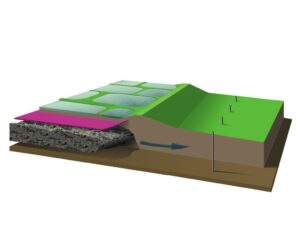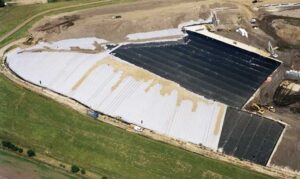Overview
Location: Volgermeerpolder, Netherlands
Date: 2001- present
Involved parties: Advies Combinatie Volgermeerpolder (ACV, consisting of Witteveen+Bos and Tauw), Bouw Combinatie Volgermeerpolder (BCV, consisting of Boskalis, De. Vries & Van de Wiel and Cofra) and the City of Amsterdam
Technology Readiness Level: 6 – technology demonstrated in relevant environment
Environment: Lakes, Cities
Keywords: Toxic waste remediation, natural cap, peat formation, ecosystem services, building with nature.

The natural cap concept involves the application of natural elements to cover and degrade toxic materials. Wetland development stimulates peat formation and peat layers serve as a natural barrier to infiltration. The peat layer absorbs almost all the precipitation, so almost no water infiltrates in the ground and through the waste material. This results in no or less leakage. Degradation of pollutants can take place in the peat layer through bacterial processes.

In traditional designs, waste dumps are capped with metal or concrete sheets, bottom sealing and foil that has to be replaced over time. This is a very costly, inefficient and unnatural method
About
A ‘natural cap’ concept has been developed as an innovative solution for remediation and management of waste dump pollution. The ‘natural cap’ concept combines natural peat and wetland development with waste encapsulation and degradation of pollutants in the peat layer.
The Volgermeerpolder, North of Amsterdam, is an area that has been used as a toxic waste deposit site for years. The area used to be a peat excavation site where peat was exploited for fuel. In order to cope with toxic leakage from the 6 meter thick waste layer into the surrounding groundwater system, monitoring was initiated and a plan was developed to cover the mound. Monitoring of the water and soil quality showed that peat prevents leakage due to its impermeable character. This led to the innovative ‘natural cap’ design. The concept will be tested further in the coming years in order to verify and prove the full working of the concept. As such the Volgermeerpolder is one of the largest wetland development sites in the world.
